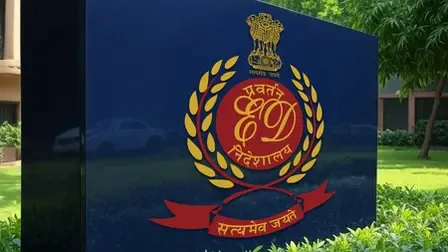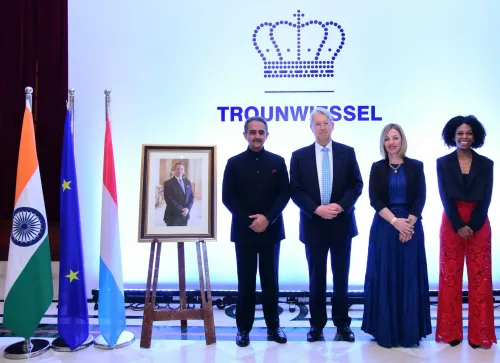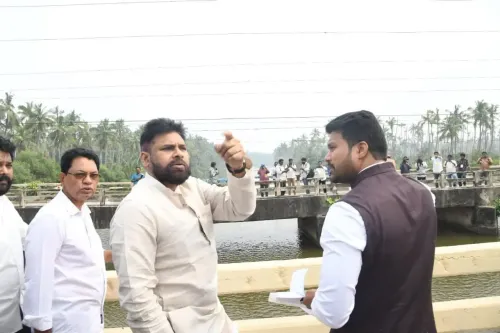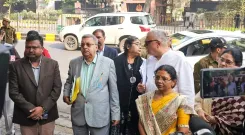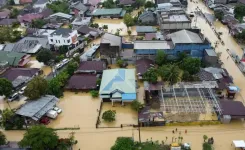What Are the Key Insights from Gujarat's 12th Chintan Shivir on Its Vision for 2047?
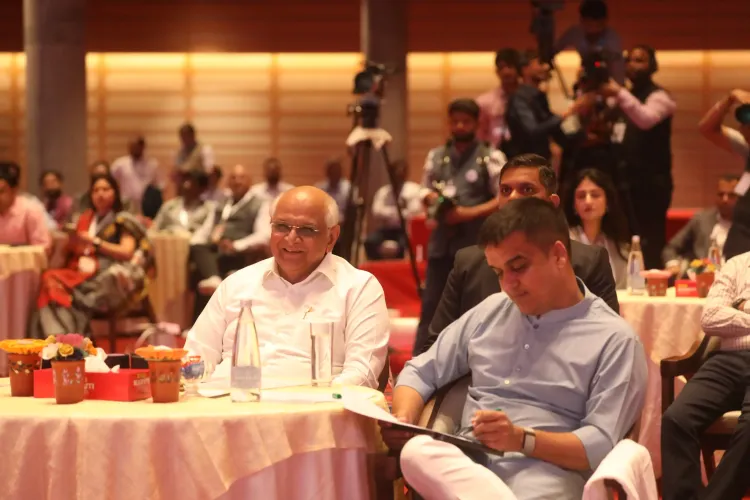
Synopsis
Key Takeaways
- Focus on capacity building for a future-ready workforce.
- Addressing public health and nutrition challenges.
- Emphasizing green energy and environmental sustainability.
- Enhancing public safety through infrastructure improvements.
- Expanding the services sector for economic growth.
Dharampur, Nov 28 (NationPress) The second day of Gujarat’s 12th Chintan Shivir held at Shrimad Rajchandra Ashram featured a rigorous series of group discussions steered by Chief Minister Bhupendra Patel, Deputy Chief Minister Harsh Sanghavi, cabinet ministers, and senior bureaucrats.
This three-day retreat, nestled in the tribal heart of Dharampur, emphasizes the belief that shared reflection fosters shared growth. The morning sessions gathered ministers, secretaries, district collectors, and development officers to focus on five key areas: capacity building, public health and nutrition, green energy and environment, public safety, and the expansion of services.
All discussions were framed within the broader national aspiration of Viksit Bharat @ 2047, with Gujarat aiming to spearhead that evolution.
During the capacity-building discussions, ministers and senior officials explored the restructuring of cadres, continuous training models, performance assessments, and the establishment of platforms to cultivate a workforce ready for the future.
The conversations stressed on equipping Gujarat’s human resources for upcoming technologies and the developmental phase leading to the state’s 75th anniversary in 2035.
The public health and nutrition team scrutinized Gujarat's advancements and challenges in crucial metrics like maternal and infant mortality, anaemia, and malnutrition, including issues like wasting, underweight, and stunting in children. The discussions pinpointed the necessity for enhanced infrastructure, technology-driven solutions, and a concentrated focus on the most vulnerable communities to hasten improvements.
Green energy and climate governance surfaced as another pivotal theme. With Prime Minister Narendra Modi setting ambitious targets of 500 GW of non-fossil fuel energy by 2030 and achieving net-zero by 2070, officials brainstormed strategies for energy self-sufficiency, environmental resilience, circular economy initiatives, and increasing the integration of green energy in governance and public systems.
Public safety discussions revolved around fortifying essential infrastructure such as roads, bridges, public buildings, water supply, and drainage systems. Delegates also explored fire safety, emergency response, traffic management, and the role of technology, transparency, and collective accountability in ensuring citizen safety.
The services sector group analyzed employment-rich sectors like IT and ITeS, Global Capability Centres, financial services, logistics, port-linked services, gig economy, and green services. Officials shared current initiatives and plans focusing on positioning Gujarat as a leading services-driven economy.
Every session built towards the state’s long-term strategy, with the Chintan Shivir set to transform Prime Minister Modi's vision of Viksit Bharat @ 2047 into a tangible, Gujarat-led development framework.
According to senior officials, the dynamic discussions on day two have infused new energy into this mission.

